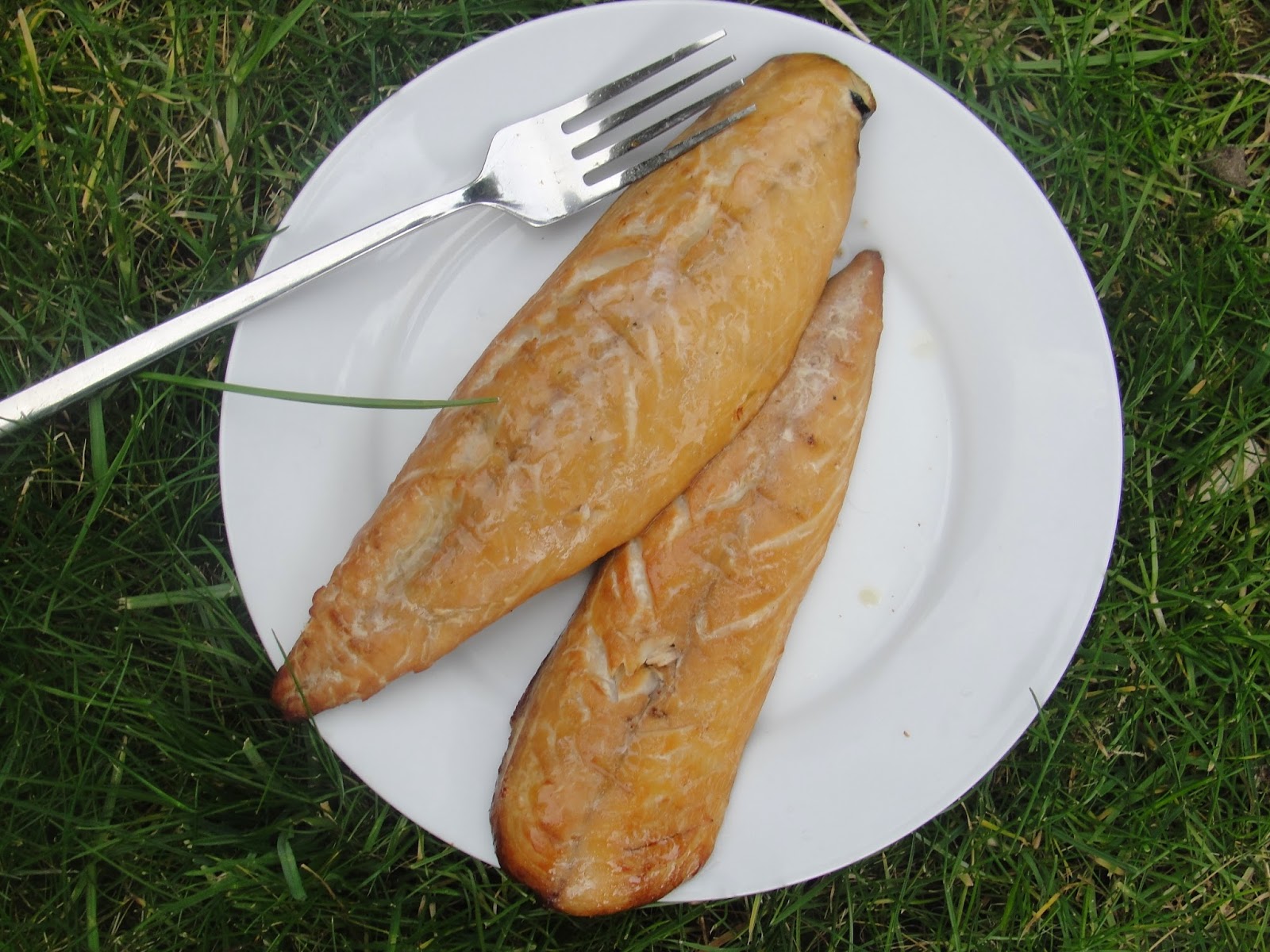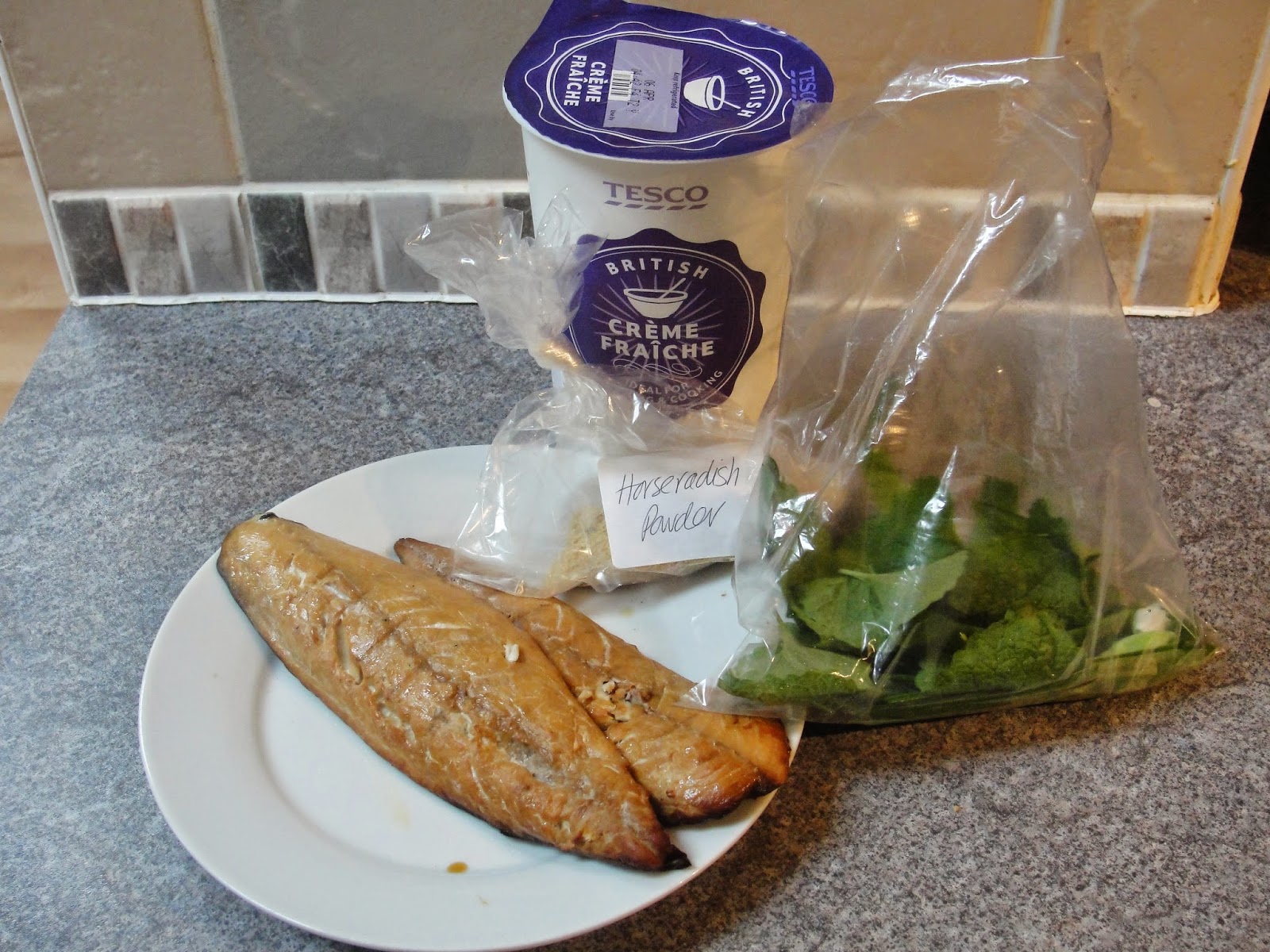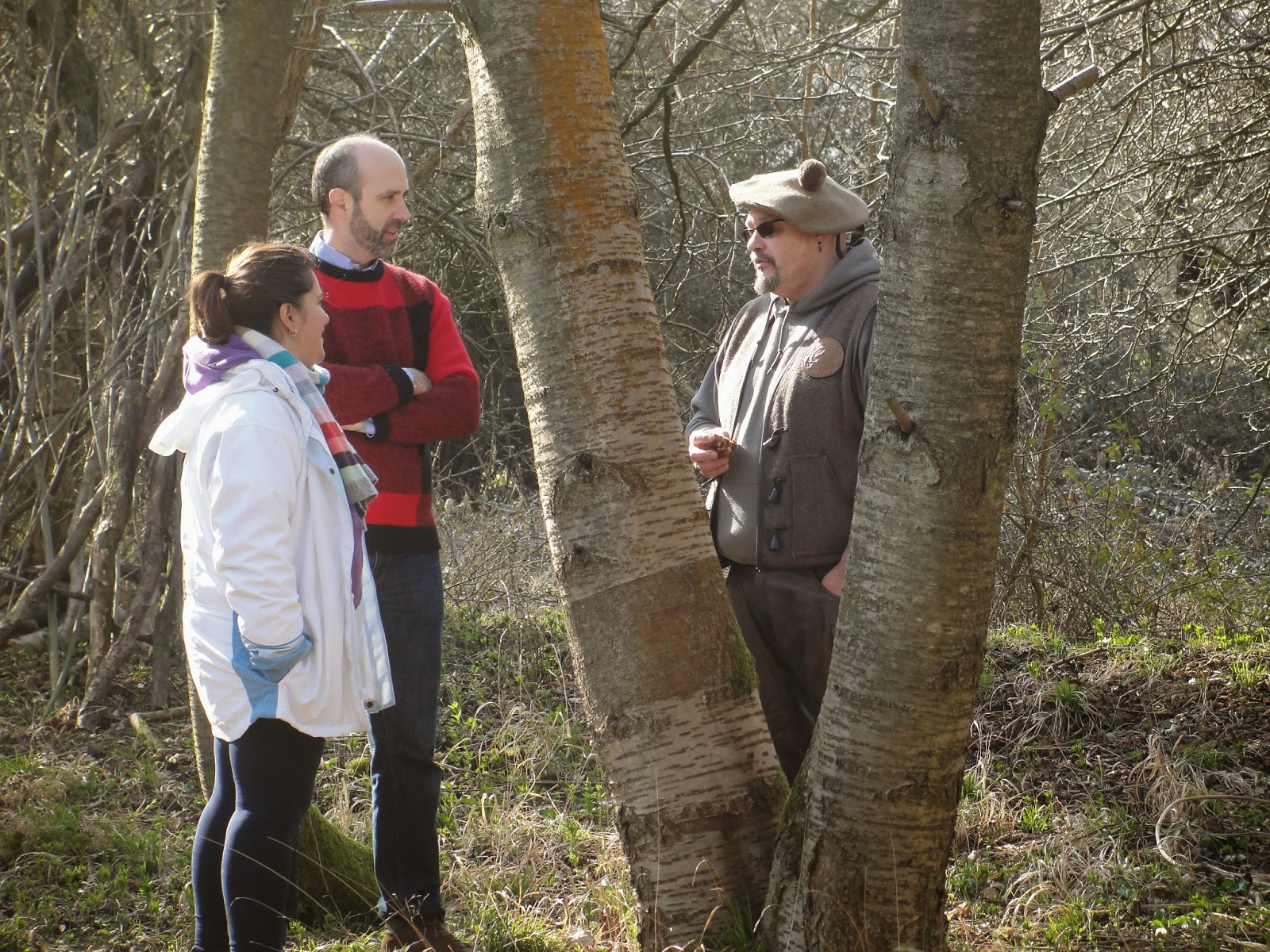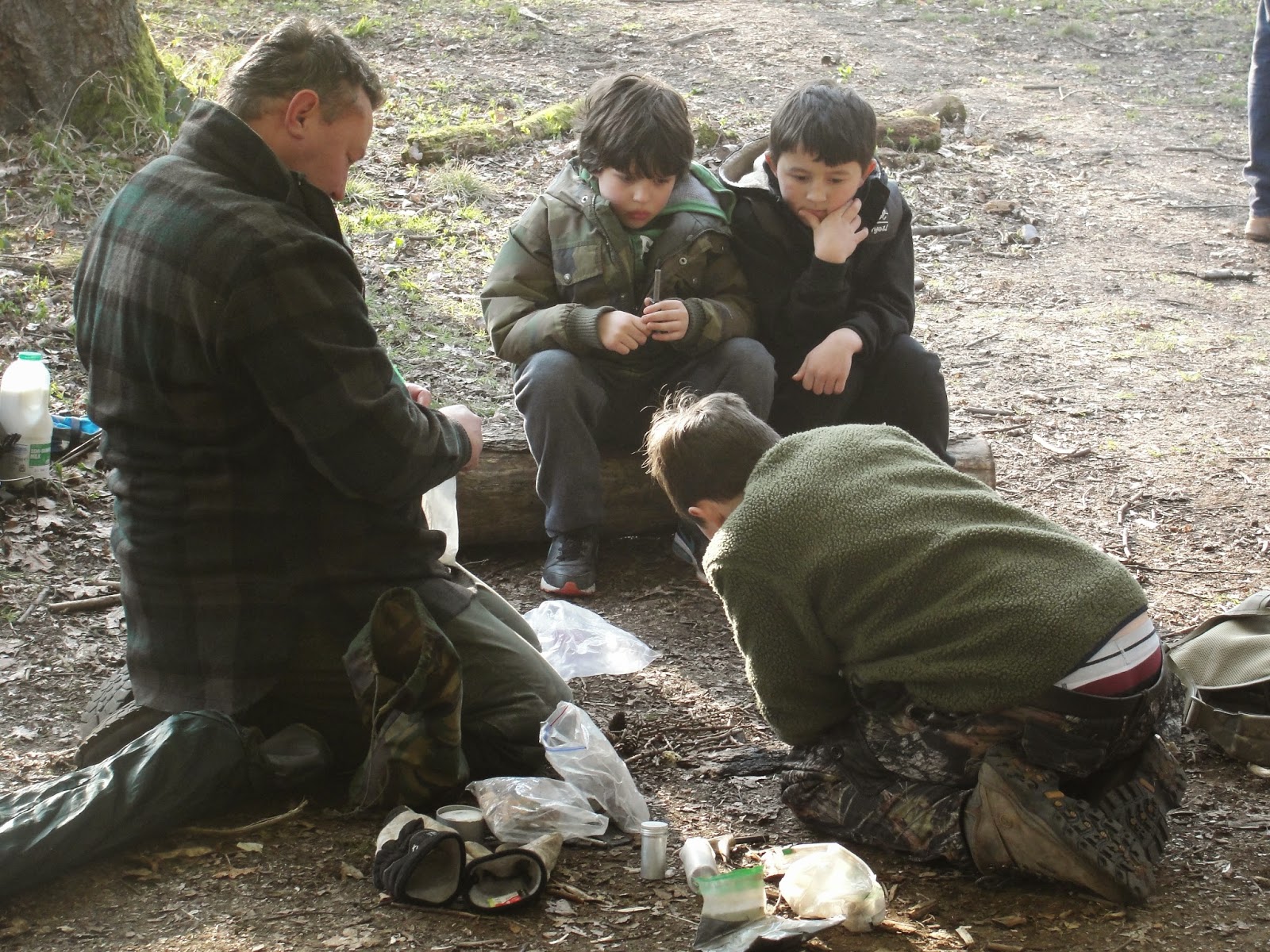You may or may not know that horseradish grows in large clumps in the UK countryside, I haven't got access to it so I took route B and purchased one from a supermarket (as it's seasonal this link may or not work if viewed some time after this blog page is published.
It looks a little like an elongated celeriac and that's where the similarity ends between the two. I wanted to make some horseradish sauce and in the process get the family to sniff the grated root, cad and bounder that I am.
Predictably it needs peeling first and this is done with ease, it's about as easy as a potato.
The peeling is the easy bit, the grating is a bit more demanding. By demanding I mean fume wise because it's not much different to grating a parsnip effort wise. It starts off ok at the thin and but builds to an intensity that will leave anyone in the room bemoaning the acrid whiff! You'll notice that there is a sort of fibrous bit that will either need discarding or more work.
Here is a shot of the return you get from a root, and you can see the large usable pile and the smaller fibrous material side by side. You simply can't peel it without having a close up smell of it. It really takes the unwary back and you can feel it through your nasal passage like a large intake of English mustard.
I made the sauce as per the supplied instructions (variation son this theme work too) and decided to try dehydrating the rest. Once done I put it in a mortar and pestle to grind into a powder, and used a little course sea salt to grind the last tougher fibres up.
This is the sauce (which surprisingly mellows somewhat with cremé fraiche etc added. I had recently had mackerel paté at a restaurant that had a shot of horseradish in and it really cut through the oiliness of the fish so I thought I'd try and produce my version of it.
First off two shop purchased mackerel fillets into the smoker with some Jerky Shack oak chips which give a nice rounded smokiness.
Once done it they were then skinned and de-boned (and the dark ventral meat removed) and it was then time to gather the two ingredients that I was going to use as garlic and onion substitutes. The first was jack-by-the-hedge. I love how the leaves can be either rounded or pointed lobes...
The other foraged ingredient was three cornered leek-Well I think it is-I had a prominent bushcraft instructor ID it but I can't recall whether it was this or not, but I know it's edible. I've included the flower (which are multiples from one stalk when fully out) and a cross section of the stems which don't exactly look three cornered if I'm honest.
Once the greenery was chopped I added the other ingredients which were the powdered horseradish and creme fraiché to the blitzer and pulsed it all to a well, a paté.
The finished result has a slightly more green hue to it with the verdant allium substitutions as compered to regular mackerel paté and I got my family to try and it was liked because the smokiness wasn't too ballsy. The only thing was, the horseradish powder had lost a lot of it's potency having been prepped and ground which was disappointing but you never know until you try these things.
























































































